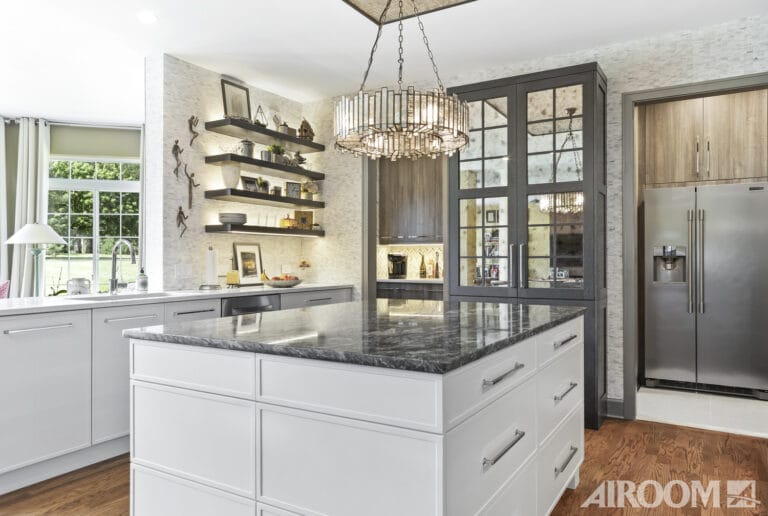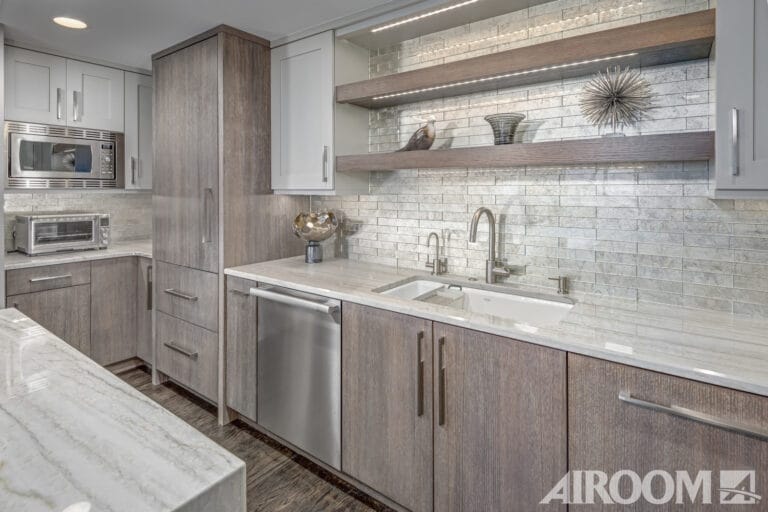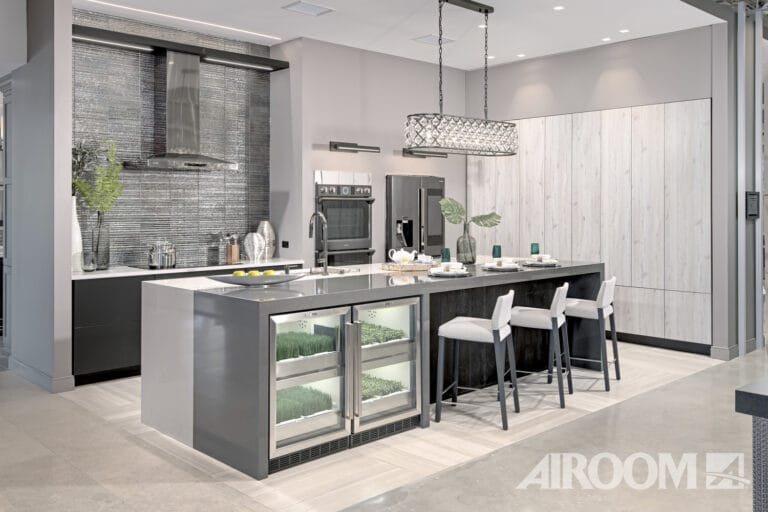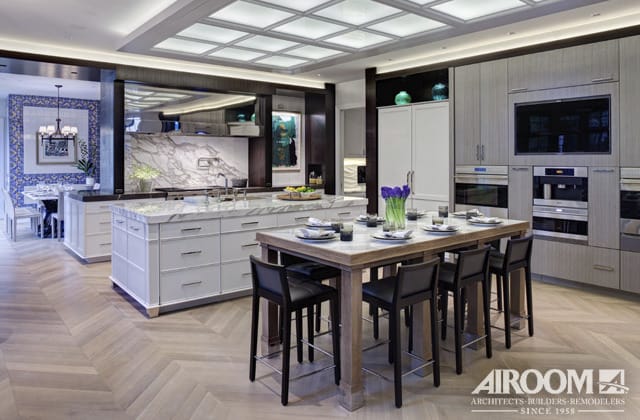Related Posts
Tags
Wondering about the difference between overlay and inset cabinetry? Overlay cabinets have doors that sit outside the cabinet frame, giving you a modern, seamless look. In contrast, inset cabinets have doors that fit inside the frame, offering a classic and elegant design. This blog breaks down these differences, including “overlay vs inset cabinetry: what’s the difference,” to help you make the best choice for your kitchen.
Key Takeaways
- Overlay cabinets feature doors that lay over the frame, offering a modern look with options like full and partial overlay, while inset cabinets sit flush for a classic, high-end aesthetic.
- When considering overlay vs inset, overlay cabinets are generally more budget-friendly and easier to install, while inset cabinets often require more precise craftsmanship and higher costs.
- Choosing the right cabinet style depends on personal preference, kitchen layout, and budget, with overlay cabinets being practical and contemporary, and inset cabinets providing timeless elegance.
Understanding Overlay Cabinets
Defined by doors that rest on top of the cabinet frame, overlay cabinets present a seamless and modern appearance that is both adaptable and stylish. The way these doors cover the cabinet frame impacts not just how they look, but also their functionality, which contributes to their popularity in modern kitchen layouts. Overlay cabinetry comes mainly in two types: full overlay and partial overlay, each providing unique visual appeal as well as practical advantages. The addition of overlay cabinet doors can significantly improve the aesthetic coherence of your cabinets.
Whether you’re aiming for a clean and contemporary vibe or prefer something with traditional undertones, overlay cabinetry offers customization options to meet various design preferences and practical requirements. This flexibility ensures that whatever your personal style may be, there are suitable choices within this range of cabinetry to complete your kitchen space effectively.
Installing multiple basement windows is highly recommended to allow for natural airflow. This is particularly important in unventilated basements, where stale air can accumulate and cause the basement to feel stuffy. The addition of egress windows offers several key benefits. They improve ventilation, add a layer of safety, and comply with building codes by providing essential escape routes during emergencies. Egress windows also enhance the overall livability of basement areas.
Full Overlay Cabinets
Full overlay cabinets are characterized by the following features:
- The cabinet doors completely conceal the cabinet frame, giving off a smooth and contemporary vibe.
- The gaps between doors and drawers are reduced to achieve a more unified appearance.
- They incorporate hidden hinges that enhance their sleek finish and contribute to maintaining clean lines. This full overlay design plays a significant role in elevating the visual appeal of these cabinets.
This style is particularly attractive within modern kitchen designs due to its refined look.
The customization possibilities for full overlay cabinets abound, enabling individuals to select from an array of door styles and finishes. Although they share aesthetic similarities with inset cabinets, full overlay options tend to be more affordable. This affordability makes them an advantageous alternative for those who aspire for an upscale ambiance but at a more modest expense.
Partial Overlay Cabinets
On the other hand, partial overlay cabinets embody a more classic style by leaving parts of the cabinet frame visible. This design yields a tiered appearance with spaces between doors, setting it apart from the continuous look of full overlay options. While some may find these gaps less appealing, they are essential to the traditional allure associated with partial overlay cabinets.
The primary benefit of opting for partial overlay cabinets is their affordability. These cabinets consume fewer materials and require simpler hardware solutions, providing homeowners an economical pathway to attain a timeless aesthetic without incurring significant expenses.
Understanding Inset Cabinets
Inset cabinets feature cabinet doors that are designed to sit flush with the frame of the cabinet, demanding meticulous craftsmanship and precise fitting. These types of cabinets exude a timeless classic look marked by sleek, clean lines, which harmoniously blend into both contemporary and traditional kitchen decors. The installation process for inset cabinets calls for exacting measurements and typically necessitates the skills possessed by an experienced master cabinetmaker.
The construction standards for inset cabinet doors include maintaining a consistent 1/8-inch gap between each door and its corresponding frame. This precision in spacing requires not only accurate hardware but also contributes to their sophisticated appearance. It’s this level of detail in design and execution that endows inset cabinetry with its enduring allure and distinguishes it as a premium choice in cabinetry aesthetics.
Beaded Inset Cabinets
Beaded inset cabinetry showcases ornate grooves and meticulous detailing that epitomizes precise craftsmanship. These cabinets present a harmonious fusion of age-old artisanship and modern allure, ensuring their design remains both timeless and sophisticated. The addition of beaded accents elevates the level of refinement, allowing for personalization to align with specific aesthetic tastes.
Cherished for their perpetual grace, these high-quality beaded inset cabinets are synonymous with luxurious, bespoke designs. They infuse kitchens with an element of antique charisma and distinction—qualities highly coveted by homeowners eager to incorporate a chic yet enduring option into their cabinetry selection.
Flush Inset Cabinets
Inset cabinets are crafted to ensure the doors align perfectly with the cabinet frame, creating a smooth and cohesive appearance that enhances multiple design themes. Renowned for their streamlined silhouette and meticulous crafting, inset cabinets have become a favored selection within contemporary kitchen decor. These cabinets’ polished facade and elegant contours make them adaptable to various kitchen styles, especially when aiming for a seamless fit.
Beyond their visual charm, inset cabinets bring practical advantages such as optimized space utilization and straightforward accessibility. The doors swing open completely unobstructed, offering easy-to-use and effective storage options suited to today’s kitchens.
Key Differences Between Overlay and Inset Cabinets
Grasping the fundamental distinctions between inset and overlay cabinets is crucial for a knowledgeable choice. Overlay cabinets present a contemporary visual, contrasting with the traditional appearance that inset cabinetry offers. The method by which these cabinets are mounted plays an integral role in determining their contribution to your kitchen’s design aesthetic.
Beyond style and looks, there are additional important considerations such as the intricacy of installation, expense, and amount of storage space provided. These elements can have a considerable impact on deciding whether to opt for overlay or inset options when selecting cabinetry.
Design and Aesthetics
Inset cabinets bring an element of sophistication and luxury to kitchen design, contributing significantly to the room’s aesthetic. Beaded inset cabinetry incorporates ornamental grooves that add a layer of traditional artisanal charm. Meanwhile, flush inset cabinets blend seamlessly with adjacent cabinetry, maintaining a clean and continuous line.
The choice between overlay and inset options typically hinges on individual taste in aesthetics. Overlay cabinets impart a contemporary vibe, offering flexibility in adapting various stylistic details to align with personal tastes. Conversely, both inset and overlay styles provide classic allure suitable for homes with conventional architectural elements.
Installation Complexity
Inset cabinets, known for their sleek design, require meticulous attention to detail during construction. The doors must be precisely measured so that they align perfectly with the frame of the cabinet. This requirement for precision usually calls upon the specialized skills of experienced cabinet makers and contributes to a more challenging and costly installation.
On the other hand, overlay cabinets offer a simpler route in terms of installation because they do not require such precise measurements. Their ease of installation makes them a convenient option for homeowners who prefer an uncomplicated setup process.
Cost Comparison
When comparing the costs of overlay and inset cabinets, several points stand out.
- Typically, overlay cabinets come with a lower price tag than their inset counterparts.
- The cost for inset cabinetry can be 15% to 30% higher because they demand greater customization and more intricate craftsmanship.
- Despite the increased expense, many justify it by pointing to the premium aesthetic and enduring value provided by inset cabinets.
Although opting for luxurious-looking inset cabinets might be appealing, choosing overlay cabins offers an economically sensible alternative while still maintaining an attractive design. Due to reduced labor expenses and less complex installation procedures, overlay cabinetry is often favored for those who are budget-conscious.
Storage Space
When contemplating storage options, it’s essential to note that overlay cabinets typically provide greater storage space owing to their expansive door coverage. This feature facilitates better utilization of the cabinet’s internal area, rendering them a favorable option for individuals seeking to optimize kitchen storage.
Partial overlays grant more straightforward access to the doors and drawers without necessitating extra hardware, which adds to their convenience. On the other hand, inset cabinets might slightly diminish available interior space because of their door thickness. This is an important consideration in the debate between inset versus alternative cabinet styles. Insets have the capability to offer a polished appearance that aligns with various design themes within inset aesthetics.
Pros and Cons of Overlay Cabinets
Overlay cabinets offer a range of advantages such as:
- Enhanced interior storage capacity owing to their construction
- A streamlined, modern look that complements current kitchen styles
- Improved accessibility thanks to broader openings
- The ability for personalization according to different tastes and purposes
Nevertheless, when compared with inset cabinets, overlay cabinets might display reduced intricacy in workmanship. Partial overlays can sometimes reveal noticeable gaps between the doors and frames, potentially diminishing their visual appeal.
Pros and Cons of Inset Cabinets
Inset cabinets provide a more luxurious appearance and an enduring charm that justifies their cost. They feature neater, straighter contours that improve the visual appeal of your space and can contribute considerable personality with an antique allure. There is a downside to inset cabinets as they can be prone to problems such as door sticking or distortion due to moisture expansion.
When comparing inset cabinets:
- Expect them to be 15-30% pricier than overlay cabinet options
- Be prepared for potentially reduced interior storage capacity because of the door thickness
- Understand that unlike some other cabinet designs, hardware will be necessary to open these doors
Choosing the Right Cabinet Style for Your Home
Deciding on the appropriate cabinet style for your home hinges on a variety of factors, with personal preference being paramount. The superiority of either inset or overlay cabinetry isn’t absolute. It fluctuates according to specific tastes and requirements.
In essence, selecting the right cabinet—whether inset or overlay—depends both on your individual liking and practical deliberations.
Kitchen Size and Layout
During a kitchen remodel, the size and configuration of the space greatly influence whether to opt for overlay or inset cabinetry. Overlay cabinets provide a more continuous appearance that can help small kitchens seem expansive and inviting.
On the other hand, spacious kitchens have ample room to embrace the timeless charm of inset cabinets, which contribute an element of refined grace and upscale design.
Budget Considerations
Determining the appropriate cabinet style is heavily influenced by budget constraints. For homeowners who are mindful of their spending, partial overlay cabinets present an economical choice as they are typically the least expensive option. Conversely, inset cabinets offer enduring value and a sense of timeless elegance that can warrant their higher upfront cost.
It’s vital to weigh financial considerations alongside one’s preferred look and necessary storage requirements when deciding on cabinetry to ensure a well-informed selection is made.
Personal Style Preferences
Your personal style is a key element in kitchen design, heavily impacting the ambiance through your choice of cabinetry. Typically, overlay cabinets impart a modern flair to the space, whereas inset cabinets are known for their classic charm and traditional appeal.
Your personal style is a key element in kitchen design, heavily impacting the ambiance through your choice of cabinetry. Typically, overlay cabinets impart a modern flair to the space, whereas inset cabinets are known for their classic charm and traditional appeal.
Maintenance and Longevity
Ensuring that cabinets are correctly installed and regularly maintained is essential to extend their durability and ensure they function as intended. Homeowners must be aware of the care necessary for both inset and overlay cabinets, equipping themselves with knowledge for forthcoming maintenance tasks.
Many homeowners prefer overlay cabinets because they typically require less ongoing maintenance, which makes them an appealing option for those in search of convenience without sacrificing style or utility. An overlay cabinet can contribute significantly to the visual appeal of a space while remaining highly functional.
Cleaning and Upkeep
It is essential to maintain both overlay and inset cabinets diligently to preserve their appearance and ensure they operate properly. Taking good care of your cabinetry not only maintains its visual appeal but also upholds its function and longevity.
Typically, inset cabinets demand more time for delivery because the intricacy involved in their craftsmanship can affect when maintenance should be scheduled.
Durability and Wear
The durability of cabinets is primarily influenced by the quality of materials and construction methods rather than their design as inset or overlay. Cabinets with an overlay typically provide enhanced protection for edges, which can make them more resistant to everyday use and damage.
On the other hand, it’s easier to refinish inset cabinets compared to those with an overlay, which can lead to a prolonged lifespan.
Final Thoughts on Cabinetry Choices
Choosing between overlay and inset cabinetry ultimately depends on your style preferences, budget, and the layout of your kitchen. Overlay cabinets are a smart choice for those seeking a modern, cost-effective option with ample storage space and a straightforward installation process. On the other hand, inset cabinets deliver timeless elegance and sophisticated craftsmanship, making them ideal for homeowners who value premium aesthetics and are willing to invest in their kitchen’s design.
At Airoom Architects, Builders and Remodelers, we understand that every kitchen is unique, and selecting the right cabinetry can make all the difference in creating a space that feels both functional and beautiful. Our team of experienced kitchen remodelers in Chicago brings expertise and vision to help you achieve your dream kitchen, whether you’re drawn to the contemporary charm of overlay cabinets or the classic appeal of inset designs. Let’s transform your kitchen into a space that truly reflects your style and needs.
Frequently Asked Questions
What are the main differences between overlay and inset cabinets?
The main difference is that overlay cabinets have doors that overlap the cabinet frame, giving a modern feel and more storage space, while inset cabinets sit flush with the frame, offering a classic, high-end look that requires more precision.
So, it really comes down to your style preference and whether you want a contemporary vibe or a timeless finish.
Are inset cabinets more expensive than overlay cabinets?
Absolutely, inset cabinets tend to be 15% to 30% pricier than overlay cabinets because they demand more craftsmanship and precision in their build.
So, if you’re considering your budget, keep that in mind!
Which cabinet style is better for smaller kitchens?
Overlay cabinets are a great choice for smaller kitchens because they give a streamlined look and can maximize storage, making the space feel larger and more inviting.
What are the maintenance requirements for inset vs. overlay cabinets?
Inset cabinets demand more maintenance because of their precise fit, which can lead to issues like sticking or warping.
In contrast, overlay cabinets are usually lower maintenance, making them an easier choice for those who prefer convenience.
How do I choose the right cabinet style for my home?
To choose the right cabinet style for your home, focus on your personal preferences, budget, and the overall aesthetics you want to achieve.
Make sure to consider the design, installation complexity, and the storage space you need for a perfect fit.
- Top Basement Ventilation Tips for Better Air Quality - May 23, 2025
- What to Look for When Hiring Professional Kitchen Remodelers - May 19, 2025
- How Often Do Kitchens Need to Be Remodeled? Expert Insights - May 16, 2025










Related Posts
Top Basement Ventilation Tips for Better Air Quality
What to Look for When Hiring Professional Kitchen Remodelers
How Often Do Kitchens Need to Be Remodeled? Expert Insights